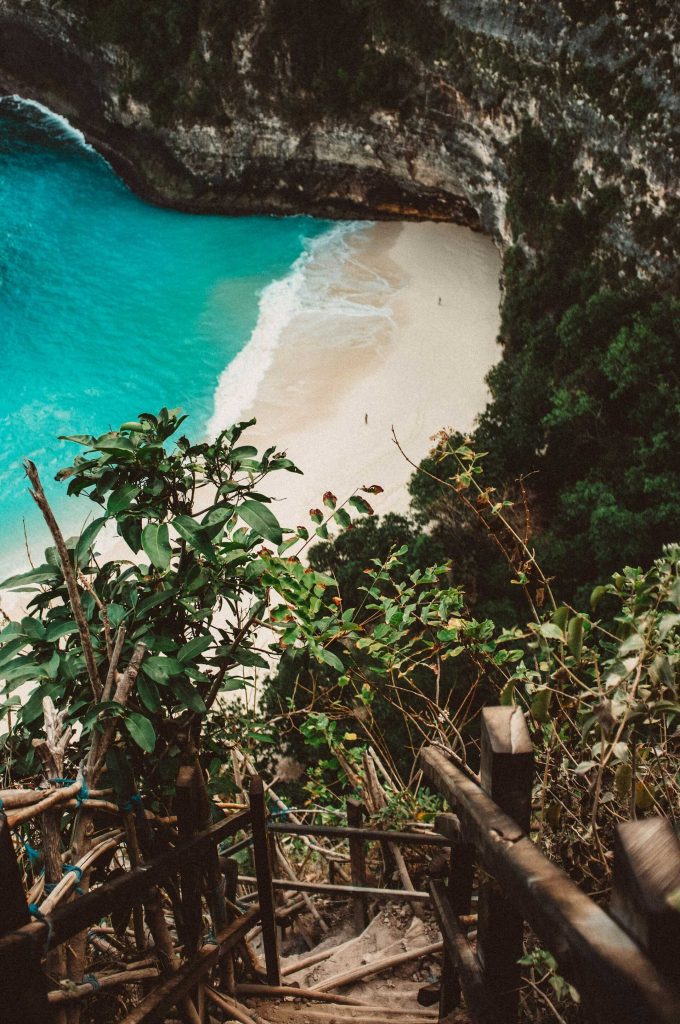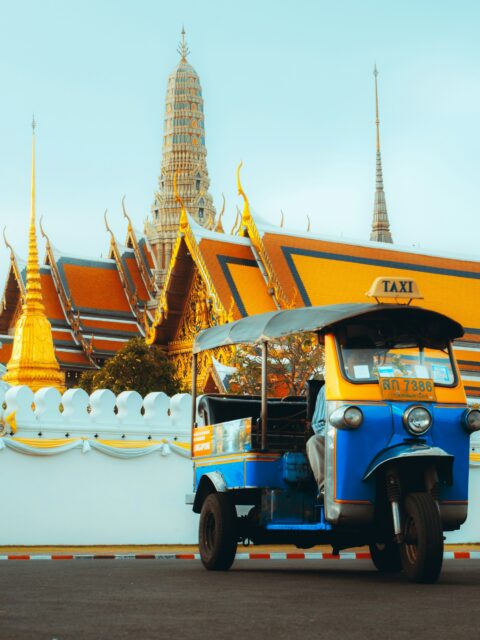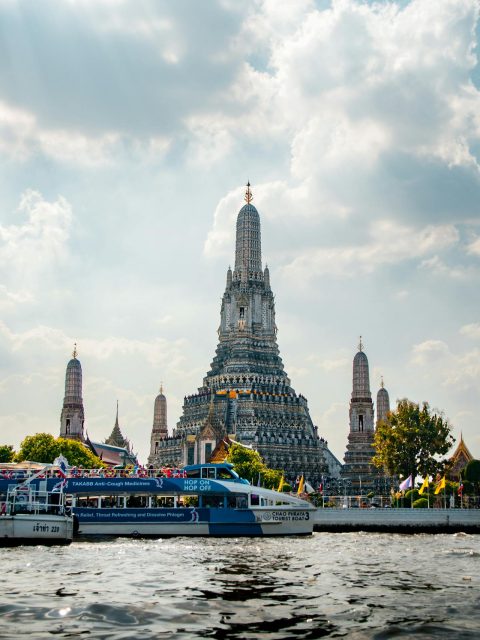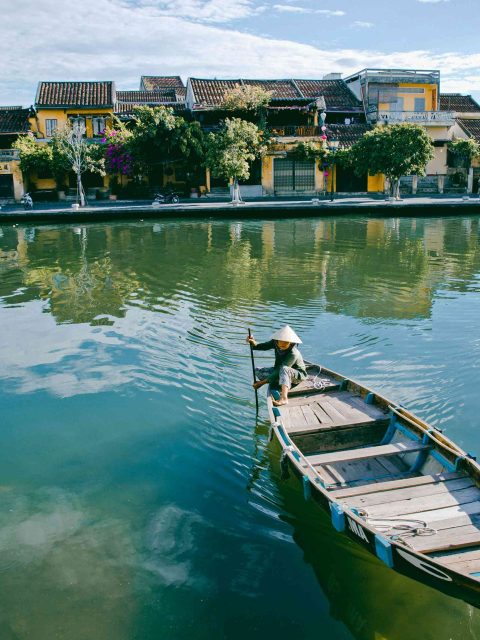Top Things to Do in Bali, Indonesia (7-Day Guide)
In a world where nature and culture blend seamlessly, Things to Do in Bali Indonesia offer a unique charm. This island boasts majestic mountains, golden beaches, and rich traditions, inviting an unforgettable exploration. Beyond its famous seaside resorts, Bali hosts vibrant festivals, authentic art performances, and ancient temples with centuries-old stories. Here, every moment lets visitors connect with nature’s beauty and a distinctive culture.
Chapters
Explore Bali, Indonesia
The culture of Bali is a unique blend of Hindu influences and traditional local traits, expressed through festivals, art, and crafts. Exploring Bali is not just about experiencing its spectacular beaches but also a deep dive into the island’s rich culture and history, from sacred temples to artisan villages and yoga sessions amidst nature.

Days 1- 2- 3: Ubud
Ubud, a town nestled among the cascading mountain ranges of Bali, is not only a vibrant center of art and culture but also a peaceful resting spot amidst nature. It serves as a gathering place for artists and craftsmen, where they share and spread their local arts and crafts. Cooking and handicraft workshops offer opportunities for visitors to learn about and engage with the island’s culture. Ubud will undoubtedly provide a memorable experience with its fresh air and stunning natural scenery.
Unique Things to Do in Ubud
Tegalalang Rice Terraces
The Tegalalang Rice Terraces are a symbol of Bali’s agricultural landscape, drawing visitors with their lush, green terraces stretching to the horizon. Located about a 30-minute drive from central Ubud, the journey to Tegalalang offers experiences along winding roads beside peaceful villages and vibrant tropical forests, making it an ideal choice for those who prefer self-guided exploration. Many visitors choose to rent scooters, a popular mode of transportation on the island, allowing them to stop wherever they wish and fully enjoy the beauty of the expansive fields.
Entrance Fee: IDR 15,000 per person
Ubud Monkey Forest
The Ubud Monkey Forest, also known as Mandala Suci Wenara Wana, is a unique natural reserve located in the heart of the ancient village of Padangtegal in Ubud, Bali. It is home to the long-tailed macaque, Macaca fascicularis, and serves as an important cultural heritage site, attracting hundreds of thousands of visitors each year who come to explore and learn. The Monkey Forest is situated about 3km south of central Ubud and is easily accessible via the road named after the forest.
The Ubud Monkey Forest is an essential stop for anyone visiting Bali, conveniently located near the center, just about 1 km walking distance from the Ubud market.
To ensure the best experience at this conservation area, it’s advisable to visit the Monkey Forest before going shopping. The reason is that the monkeys here are very curious and do not hesitate to approach visitors to inspect anything shiny or unusual that you might carry. Therefore, to avoid any unwanted situations, it is best not to bring along any jewelry or shiny objects when visiting the forest.
Ubud Art Market
The Ubud Art Market, locally known as “Pasar Seni Ubud,” is a premier destination for visitors who love shopping and exploring culture in Bali. Located opposite Puri Saren – the Royal Palace of Ubud, this market is open daily from early morning to late evening and attracts visitors with its array of exquisite handicrafts. From soft silk scarves and handwoven bags to intricately crafted baskets, each product here embodies the identity and spirit of Bali. Not limited to just handicrafts, the market also offers a variety of international standard goods to meet the needs and tastes of every visitor.
When shopping at the Ubud Art Market, bargaining is essential to ensure you get a fair price. Bargaining is not only a part of the shopping culture in Bali but also a necessary skill to avoid overpaying. A helpful tip is to start by offering about 30% of the initial price suggested by the seller, then gradually increase the amount until they agree to sell. Begin with a smile and a friendly attitude, and always maintain politeness and patience throughout the negotiation process. Although this may take some time, in the end, you will find it well worth it for the treasures you take home.
Visit the Ubud Royal Palace
The Ubud Royal Palace is the gateway to Bali’s cultural heritage. Every corner of the palace, from the entrance gates to the gardens, reflects the aesthetic taste and spirit of both ancient and contemporary Bali. The palace also hosts numerous cultural events, attracting artists and visitors from around the world.
Visiting the Ubud Royal Palace is entirely free. However, if you wish to participate in religious activities or enter areas requiring appropriate attire, you will need to wear a sarong. You can rent a sarong at the palace for a small fee. This is a great way to show respect for local customs and further immerse yourself in the atmosphere of the place.
Yoga in Ubud
Ubud, nestled among lush gardens and the majestic mountainous landscape, has become an ideal destination for yoga enthusiasts from around the world. It is renowned for its yoga centers, where you can practice and find tranquility in nature. Deeply influenced by Hinduism, Bali attracts many to strengthen and develop their yoga skills, or even to participate in yoga teacher training programs.

A yoga session in Ubud not only helps improve your physical health but also brings a profound sense of peace, allowing you to temporarily set aside the busyness of daily life. The classes here, led by professional and certified Balinese yoga instructors, offer a variety of styles from Ashtanga to Vinyasa, Hatha, and Yin, catering to all levels from beginners to experienced yogis.
Participating in yoga in Ubud is also an opportunity to relax, relieve stress, and develop inner strength. In a tranquil setting surrounded by rice fields and breathtaking nature, you will find a connection between your soul and the world around you, bringing a state of balance and harmony to both mind and body.
Campuhan Ridge Walk
Walking along the Campuhan Ridge Walk, you will be surrounded by stunning natural landscapes, from soft grassy hills to tranquil streams. A distinctive feature of this path is the absence of shops or refreshment stands, giving you the perfect opportunity to fully immerse in and appreciate the natural surroundings. It is an ideal place for activities such as gentle walking, jogging, or meditating while on the move.
This path also leads you to the village of Bangkian Sidem, a friendly local community where you can explore the lives of the residents and visit Pura Gunung Lebah, a sacred site imbued with deep cultural significance in Bali.
Day 4: Day Trip to Mount Batur
For those passionate about exploration and travel, conquering Mount Batur to watch the sunrise is an experience not to be missed. The journey begins in the dim light of early dawn, as you follow the glow of your flashlight along slippery and steep paths through the mysterious darkness. The chilly air, accompanied by a thin mist, will guide you to majestic moments standing at the mountain’s peak.
Mount Batur is considered the best spot for sunrise viewing in Bali and is also popular among athletes and adventure-seekers. The wind howls at the summit, like a call of the rising sun, creating a vivid and emotional natural tableau. Below the mountain, Lake Batur appears as a colorful mirage, reflecting the mystical beauty of the surrounding forest and hills.
Note: Climbing the mountain without a guide is not permitted. Therefore, booking a guided tour is the right choice. Guides not only help you navigate the challenges of the climb but also share valuable knowledge about the geology and ecology of Mount Batur. You will also enjoy a breakfast with a hot cup of coffee right at the summit.
Relax at the Kintamani Hot Springs
After a challenging climb up Mount Batur, finding a place to relax and recuperate is essential. The natural hot springs in the Kintamani area are the perfect solution to soothe both body and mind after the strenuous hours of climbing. These hot springs not only help relax muscles but are also known for their therapeutic properties, alleviating arthritis and promoting wound healing. Immersing yourself in the warm waters, you will feel a deep relaxation and energy restoration.
Day 5: Day Trip to Nusa Penida
Nusa Penida is the pristine gem located southeast of Bali, Indonesia, and is part of the Nusa Islands, which also includes Nusa Lembongan and Nusa Ceningan. This island draws visitors with its secluded, clean beaches, magnificent mountainous landscapes, and a rich marine biodiversity, especially its colorful coral reefs.
The journey from Bali to Nusa Penida takes only about 30 minutes by ferry, and spending a day here offers a fantastic opportunity to explore the island’s highlights without the need for an overnight stay.
Things to do in Nusa Penida
Kelingking Beach (T-Rex Bay)
Kelingking Beach is arguably the most famous tourist attraction on Nusa Penida, and perhaps even in all of Bali. If you’re active on social media, you’ve likely seen images of this beach. The beach’s unique shape, resembling a dinosaur’s claw, makes it a unique photographic spot. From the striking cliffs of Kelingking Beach, you can admire the clear blue waters, and if you’re lucky, you might even spot the shadows of manta rays from afar.
At the base of the cliffs lies a secluded bay with pristine white sandy beaches. However, the path down to this beach is one of the most challenging on Nusa Penida. If you decide to explore, make sure to wear appropriate footwear and bring enough drinking water, as the journey down can take about 30-45 minutes.
Warning: Be cautious when entering the water near the shore as the waves here are very strong and can sweep you away in seconds. Swimming at Kelingking Beach is also prohibited due to the dangers posed by strong waves and currents.
Paluang Cliff
Paluang Cliff is very close to Kelingking Beach, which often leads many tourists to visit both spots in one trip. It is one of the most scenic and tranquil viewpoints on Nusa Penida, where you can enjoy panoramic views of the vast sea against steep cliffs, creating an ideal setting for those who love photography and sightseeing.
Angel’s Billabong
Angel’s Billabong is a stunning natural pool set amidst the sea, formed by ancient volcanic rock flows on Nusa Penida. Often described as the “emerald” of the area due to its characteristic turquoise blue water, which is so clear that you can see right to the bottom. The natural beauty of Angel’s Billabong, along with its proximity to Broken Beach, makes it a must-visit spot for anyone traveling to Nusa Penida. When the tide is low, part of the pool becomes separated from the sea, forming an ideal natural swimming area at Angel’s Billabong. Visitors can explore this pool on sunny days when the sunlight illuminates the water’s surface, creating a shimmering light effect.
Need to Know: The ideal times to visit and enjoy the scenery at Angel’s Billabong are early in the morning from 8 to 9 AM or in the afternoon from 3 to 4 PM, coinciding with low tide. However, to choose the correct time when the tide is at its lowest, be sure to check the specific tide schedule for the day of your visit. The light during these times is usually gentle, perfect for photography and enjoying the view.
Broken Beach (Pasih Uwug)
Having visited Angel’s Billabong, you cannot miss Broken Beach, located very close by. Its defining feature is a large natural rock arch forming a hole that looks like a cave or tunnel opening out to the sea, creating a unique scene. From this vantage point, you can take in the expansive views of the Indian Ocean.
The clear waters at Broken Beach allow you to observe marine life such as green sea turtles and rays.

Crystal Bay
For those who cherish peace by the seaside and wish to dive into clear waters, Crystal Bay on Nusa Penida is an unmissable destination. Here, you can spend an afternoon relaxing on the fine white sand, listening to the gentle waves, and enjoying the fresh sea air.
If you enjoy underwater activities, consider snorkeling or scuba diving to explore the colorful coral reefs and diverse marine life around the area.
Notably, Crystal Bay is also an ideal spot to watch the sunset, as the day’s light fades, the sky at this location transforms into a stunning canvas with vibrant colors.
Day 6: Uluwatu
Located in the southwestern corner of the Bukit Peninsula in Bali, Uluwatu offers an inspiring adventure that goes far beyond an ordinary stopover. Known not only for its picturesque temple perched on the cliffs, Uluwatu has much more to explore! From pristine white sandy beaches with cool, ideal waves for surf enthusiasts, to luxurious beach clubs and unforgettable sunset parties, Uluwatu has everything to satisfy anyone.
And there’s nothing better than being just about an hour’s drive from bustling tourist areas like Kuta or Canggu to this tranquil space.
Things to Do in Uluwatu
Visit Uluwatu Temple (Pura Luhur Uluwatu)
As soon as you set foot in Uluwatu Temple (Pura Luhur Uluwatu), you immediately feel the mystery and grandeur of this place. Although not overly large, the temple is perched on the edge of a steep cliff, offering one of the best sunset views in Bali, highlighting the vast beauty of the ocean and the evening sky.
In the evening, the atmosphere at Uluwatu Temple becomes even more special with the performance of the Kecak Fire Dance. As the sun sets behind the cliffs, the continuous chants and clapping of dozens of men create a lively and mystical ambiance. This performance brings to life stories from Hindu mythology, primarily from the epic Ramayana, through intense dances and bright circles of fire, making it a standout and unique show. This truly is one of the most incredible experiences you can witness in Uluwatu.
Remember, the Kecak Fire Dance starts at 6:00 PM every day at Uluwatu Temple. To ensure you don’t miss this unique cultural experience, you can buy tickets online in advance. Pre-purchasing tickets is not only convenient but also helps you avoid queuing at the venue, allowing you more time to enjoy the stunning scenery of the temple and prepare for an impressive evening.
Relax at the Beach
After visiting Uluwatu Temple in the morning and spending the rest of the afternoon relaxing and sunbathing at one of Uluwatu’s peaceful beaches, you’ll be perfectly primed to enjoy the Kecak Fire Dance performance at sunset. The beaches here, with their clear waters and fine white sand, are the ideal place to enjoy the tranquil sea atmosphere, listen to the gentle sound of the waves, and feel the sea breeze.
Day 7: Canggu
If you are searching for the tranquility of lush green rice fields like those in Ubud combined with the vibrant atmosphere of famous beaches, then Canggu is the place that has it all. It offers a peaceful yet lively ambiance, making it a compelling destination in Bali.
Start your day by meandering through trails that cut across verdant rice paddies, an absolutely wonderful experience that you won’t find in busier tourist areas. Imagine riding a scooter on a quiet country road, flanked by picturesque rural scenes straight out of a dream.
After enjoying the fresh air of the countryside, you might want to try an outdoor yoga class to fully embrace the serene vibe of Canggu, where nature and people exist in harmony. These classes are often held at resorts or along beach clubs, providing a sense of balance and relaxation.
Beyond yoga, Canggu is also a paradise for surf enthusiasts. Echo Beach, with its strong waves, is ideal whether you are a beginner or a seasoned surfer. The waves here are always ready to challenge any skill level.
If you have time, consider visiting Tanah Lot Temple at the end of the day to watch the sunset. Tanah Lot, one of the most sacred and iconic temples in Bali, stands firmly on a large rock amidst the sea. With the sound of the waves crashing, it creates a spectacular setting and offers a fittingly impressive farewell to Bali.
Is bali indonesia safe
While scams and petty crimes are not uncommon in Bali, it’s important to note that the majority of crimes are non-violent. For most travelers, Bali remains a very safe destination to explore and enjoy. However, it’s wise to stay vigilant, as some individuals may see tourists as easy targets and try to take advantage of them whenever possible. With a bit of caution and awareness, you can fully enjoy all the beauty and culture that Bali has to offer without much concern.
Travel cost bali
The cost of your trip to Bali can vary widely depending on when you go, where you stay, and how you like to spend your money. That said, Bali is known for being a budget-friendly destination. If you avoid the peak tourist season in July and August, you’ll find that accommodation prices drop significantly, and there are plenty of great deals to be had. On average, a one-week trip to Bali for two people costs around $1,050 (Rp 16,171,260). This includes your accommodation, food, local transportation, and sightseeing. With a little planning, you can enjoy all that Bali has to offer without breaking the bank.
Best time to visit bali indonesia
The period from May to October is the ideal time to visit Bali, as the dry season brings cool and dry weather, perfect for outdoor activities and exceptional beach experiences. During this time, temperatures are generally comfortable, not too hot, providing ideal conditions for diving or participating in water sports.
However, the months of July, August, and September see a high influx of tourists, making Bali more crowded and potentially affecting the overall travel experience. During these months, the costs of accommodation, dining, and entertainment usually rise. If you prefer a quiet environment and wish to avoid crowds, consider visiting the island in May, June, or October, when there are fewer tourists and prices are more reasonable.
Bali distinctly experiences two seasons: the rainy season and the dry season. The rainy season lasts from November to April, while the dry season starts in May and ends in October, offering continuous sunny days. With its warm tropical climate, Bali becomes an ideal destination for those seeking warmth and a connection with nature in a relaxing setting.






















